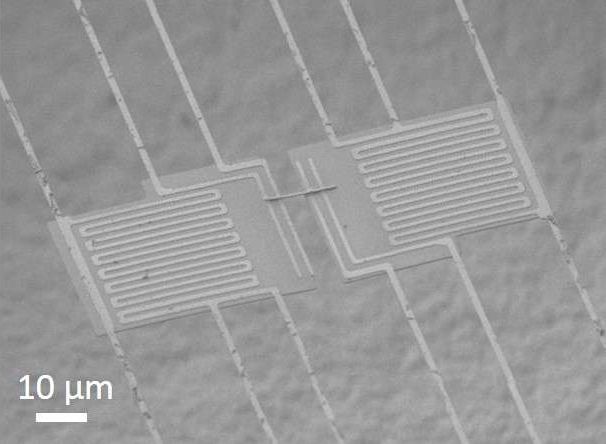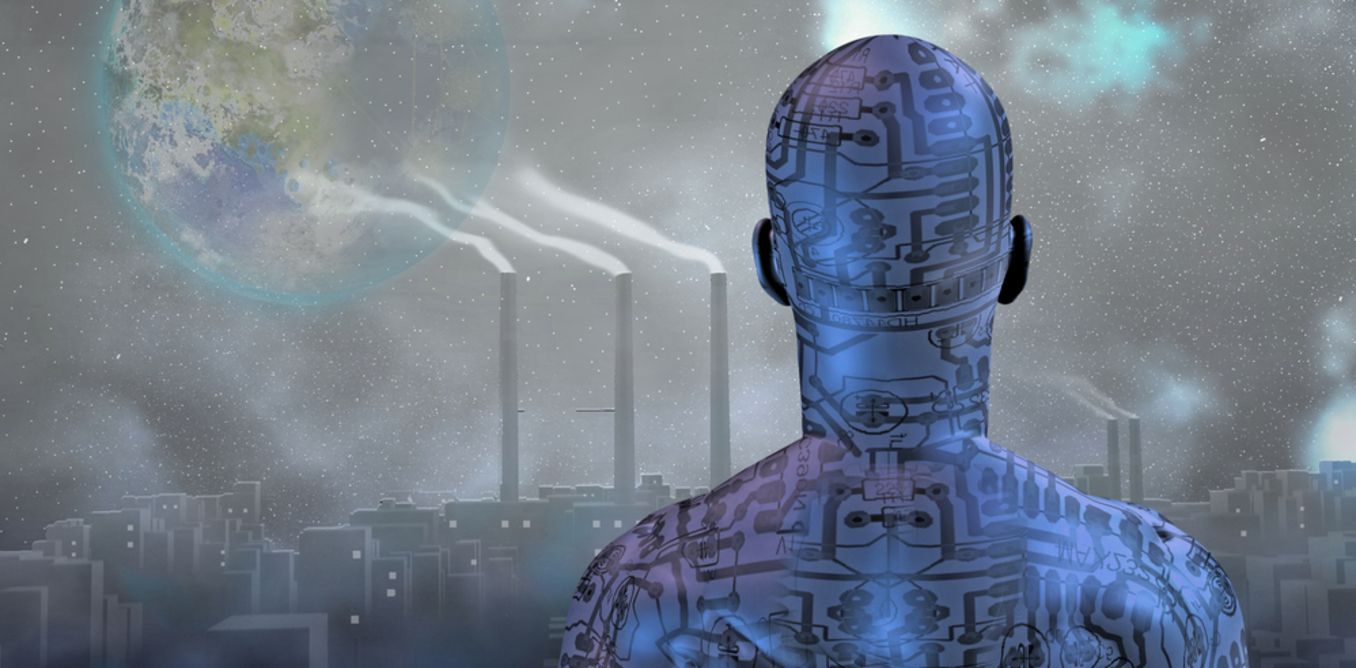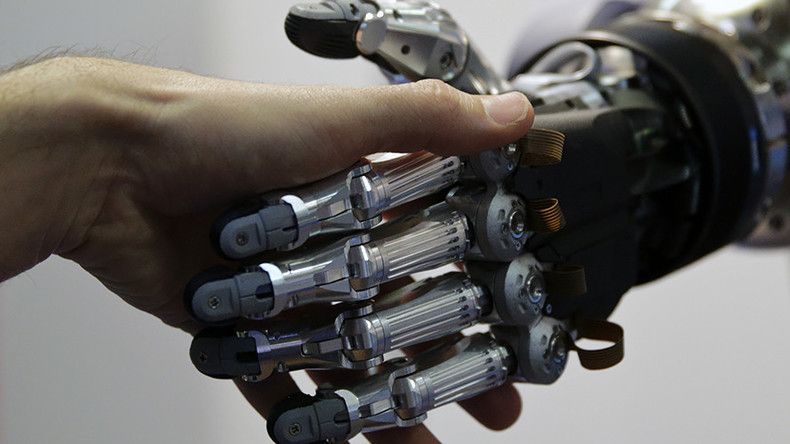Pay attention to the trends in exponential technologies. particularly to “the big three,” says Jason Silva. Those 3 are GNR: Genetics, Nanotechnology, and Robotics.
Category: nanotechnology – Page 318

Scientists discover unique thermoelectric properties in cesium tin iodide
A newly discovered collective rattling effect in a type of crystalline semiconductor blocks most heat transfer while preserving high electrical conductivity — a rare pairing that scientists say could reduce heat buildup in electronic devices and turbine engines, among other possible applications.
A team led by scientists at the Department of Energy’s Lawrence Berkeley National Laboratory (Berkeley Lab) discovered these exotic traits in a class of materials known as halide perovskites, which are also considered promising candidates for next-generation solar panels, nanoscale lasers, electronic cooling, and electronic displays.
These interrelated thermal and electrical (or “thermoelectric”) properties were found in nanoscale wires of cesium tin iodide (CsSnI3). The material was observed to have one of the lowest levels of heat conductivity among materials with a continuous crystalline structure.

Opinion: Super-intelligence and eternal life—transhumanism’s faithful follow it blindly into a future for the elite
The rapid development of so-called NBIC technologies – nanotechnology, biotechnology, information technology and cognitive science – are giving rise to possibilities that have long been the domain of science fiction. Disease, ageing and even death are all human realities that these technologies seek to end.
They may enable us to enjoy greater “morphological freedom” – we could take on new forms through prosthetics or genetic engineering. Or advance our cognitive capacities. We could use brain-computer interfaces to link us to advanced artificial intelligence (AI).
Nanobots could roam our bloodstream to monitor our health and enhance our emotional propensities for joy, love or other emotions. Advances in one area often raise new possibilities in others, and this “convergence” may bring about radical changes to our world in the near-future.

Floating City Project Wants To Make An ‘Unregulated’ Hub Of Scientific Research
In the hopes of rising above the laws and regulations of terrestrial nations, a group of Silicon Valley millionaires has bold plans to build a floating city in Tahiti, French Polynesia. It sounds like the start of a sci-fi dystopia (in fact, this is the basic premise behind the video game Bioshock), but the brains behind the project say their techno-libertarian community could become a paradise for technological entrepreneurship and scientific innovation.
The Seasteading Institute was set up in 2008 by billionaire PayPal founder Peter Thiel and software engineer, poker player, and political economic theorist Patri Friedman. Both ardent libertarians, their wide-eyed mission is to “establish permanent, autonomous ocean communities to enable experimentation and innovation with diverse social, political, and legal systems.”
“Seasteading will create unique opportunities for aquaculture, vertical farming, and scientific and engineering research into ecology, wave energy, medicine, nanotechnology, computer science, marine structures, biofuels, etc,” their website reads.
Researchers can now Inject Nanobots Into Your Veins
Since nanobots are no longer fiction, is it time to start answering body augmentation questions raised by sci-fi genres like Cyberpunk?

Fast, Efficient bloodstream robots
The unique swimming strategies of natural microorganisms have inspired recent development of magnetic micro/nanorobots powered by artificial helical or flexible flagella. However, as artificial nanoswimmers with unique geometries are being developed, it is critical to explore new potential modes for kinetic optimization. For example, the freestyle stroke is the most efficient of the competitive swimming strokes for humans. Here we report a new type of magnetic nanorobot, a symmetric multilinked two-arm nanoswimmer, capable of efficient “freestyle” swimming at low Reynolds numbers. Excellent agreement between the experimental observations and theoretical predictions indicates that the powerful “freestyle” propulsion of the two-arm nanorobot is attributed to synchronized oscillatory deformations of the nanorobot under the combined action of magnetic field and viscous forces. It is demonstrated for the first time that the nonplanar propulsion gait due to the cooperative “freestyle” stroke of the two magnetic arms can be powered by a plane oscillatory magnetic field. These two-arm nanorobots are capable of a powerful propulsion up to 12 body lengths per second, along with on-demand speed regulation and remote navigation. Furthermore, the nonplanar propulsion gait powered by the consecutive swinging of the achiral magnetic arms is more efficient than that of common chiral nanohelical swimmers. This new swimming mechanism and its attractive performance opens new possibilities in designing remotely actuated nanorobots for biomedical operation at the nanoscale.
Each bot is 5 micrometres long and has three main parts, connected together like sausage links by two silver hinges. Its gold body is flanked by two magnetic arms made of nickel, and applying a magnetic field to the tiny robot makes the arms move.
The next generation bloodstream will be made from biodegradable materials before they can be used in the bloodstream. Less complicated areas in the human body like the urinary tract or the eyeballs should see clinical trials begin within the next five to 10 years. Injecting a single swimmer into an eyeball, where it could deliver medication directly to the retina and then be removed, would be much less complicated than letting a swarm of them swim throughout the entire circulatory system.

New 3D chip combines computing and data storage
As embedded intelligence is finding its way into ever more areas of our lives, fields ranging from autonomous driving to personalized medicine are generating huge amounts of data. But just as the flood of data is reaching massive proportions, the ability of computer chips to process it into useful information is stalling.
Now, researchers at Stanford University and MIT have built a new chip to overcome this hurdle. The results are published today in the journal Nature, by lead author Max Shulaker, an assistant professor of electrical engineering and computer science at MIT. Shulaker began the work as a PhD student alongside H.-S. Philip Wong and his advisor Subhasish Mitra, professors of electrical engineering and computer science at Stanford. The team also included professors Roger Howe and Krishna Saraswat, also from Stanford.
Computers today comprise different chips cobbled together. There is a chip for computing and a separate chip for data storage, and the connections between the two are limited. As applications analyze increasingly massive volumes of data, the limited rate at which data can be moved between different chips is creating a critical communication “bottleneck.” And with limited real estate on the chip, there is not enough room to place them side-by-side, even as they have been miniaturized (a phenomenon known as Moore’s Law).
Building Circuits Without Touching Them: Watch Carbon Nanotubes Self-Assemble
Through Teslaphoresis, nanotubes can be directed to assemble themselves into wires within this force field, making it possible to build circuits without physical contact.
Scientists from Rice University found a way to conduct electricity without making physical contact between the circuit and the energy source. Using a Tesla coil’s antenna to project a gradient high-voltage forcefield into air, they were able to polarize carbon nanotubes within this Teslaphoretic (TEP) field, which then spring out like webs to assemble themselves into wires.

Carbon nanotube reinforce Composites can reduce space vehicle mass
NASA’s Space Technology Mission Directorate (STMD) is keenly interested in nanotechnology – an approach that can reduce the mass and improve the performance of aerospace systems. NASA computer modeling analysis has shown that composites using carbon nanotube reinforcements could lead to a 30 percent reduction in the total mass of a launch vehicle.
“No single technology would have that much of an impact to reduce the mass of a launch vehicle by that much,” explains Michael Meador, Program Element Manager for Lightweight Materials and Manufacturing at NASA’s Glenn Research Center in Cleveland, Ohio.
Tensile properties of a carbon nanotube fiber-based composite tank were tested in a May 16 test flight.

Would human enhancement create Supermen or super tyrants?
The prospect of attaining superior intelligence or physical attributes may be tempting or appear liberating, but cybernetic enhancement could, theoretically, also be used as a means of control. Whoever manufactures the technologies that augment humans would be in a very powerful position and wield an immense degree of control over their human customers (or subjects). Moreover, cybernetically enhanced humans could see their microchips hacked, have their sensations detected by unwanted parties and stored in a database, or be at risk of receiving unsolicited or unpleasant impulses. Might we evolve from homo sapiens to homo servus?
The dream that we may one day transcend our physical and intellectual barriers through advancements in cybernetics and nanotechnology could became a reality during this century. But would this be a blessing or a curse?
As science expands its frontiers and technology continues to evolve, ideas once deemed fanciful or considered part of science fiction find themselves within the realm of possibility. New discoveries may give rise to unique potential and perils, as the field of ethics struggles to keep pace with the latest technological advancements. The dream that one day we humans may eclipse our physical and mental fetters through augmentation by cybernetics or nanotechnology could become a reality. Although transhumanism and posthumanism are considered modern concepts, the idea of improving or transcending the human condition has been explored in philosophy and literature since at least the mid-19th century.
In his book Thus Spoke Zarathustra, 19th century German philosopher Friedrich Nietzsche introduced the concept of the Übermensch (overman or superman) as a goal towards which humans ought to strive, whereby they take control of their own destinies, work collectively towards the betterment of humanity and create a higher set of ideals to give their existence greater meaning. Nietzsche wrote “Man is something that shall be overcome.” (The notion of Übermensch was later corrupted by the Nazis, who integrated it into their perverse racial theories).